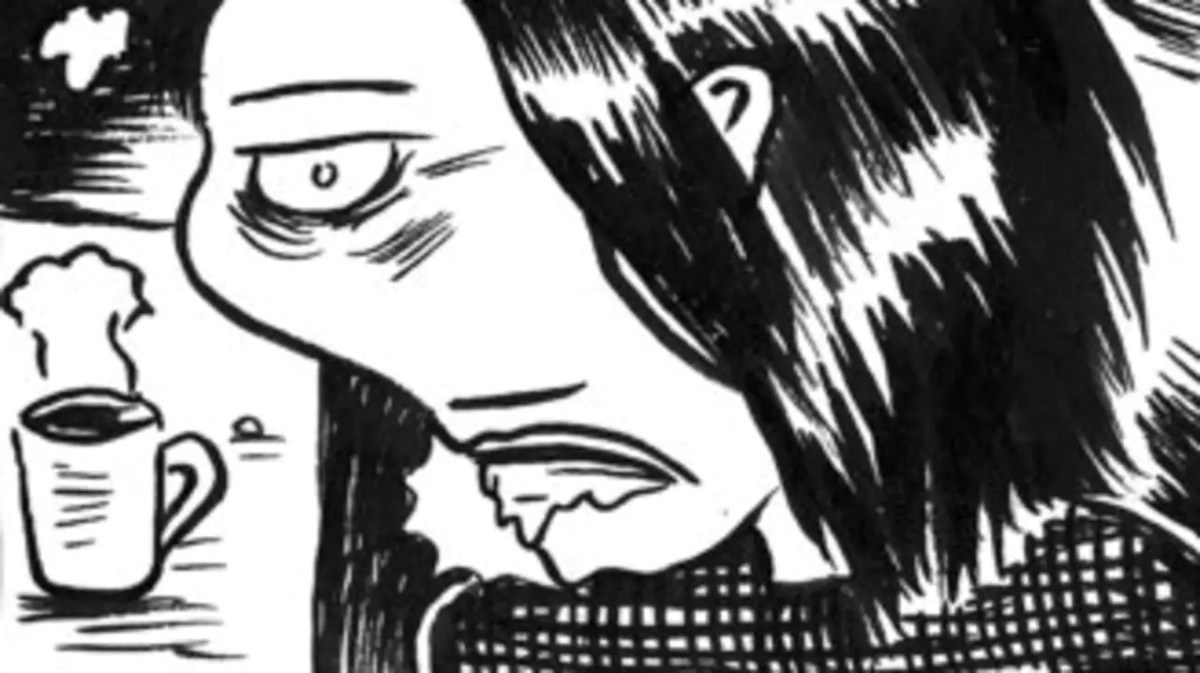All too often, the term ‘graphic novel’ is inaccurately used to describe a collection of individual comic books bound together in a single volume – think Alan Moore’s The Watchmen (an episodic story in 12 parts) or Neil Gaiman’s collected volumes of Sandman (75 individual issues in its original run).
Such collections, usually trade paperbacks, are certainly epic in scope and remarkable acts of imagination, but they weren’t necessarily imagined as novels per se – they were written as monthly instalments, not as a sustained, focused and finite narrative.
Even Will Eisner’s 1978 book A Contract with God, and Other Tenement Stories, which is generally recognised as the world’s first ‘graphic novel’, was a collection of short stories in comic book form – though the genre’s antecedents go back at least as far as Lynd Ward’s wordless woodcut novels published between 1929 – 1937, not to mention Charlotte Salomon’s deeply affecting ‘cabaret on paper’ created between 1941 and 1943, and many others.
A handy marketing term which suggests that comics should be taken just as seriously as ‘real literature’, graphic novels – long-form comic books that embrace the potential of their artform, existing as it does ‘in the tension between images and text. Talented creators can play with that tension in ways that are utterly unique to comics’ – do exist.
That said, we should probably just call them comic books – emphasis on the books – and do away with a phrase that Aotearoa/New Zealand comics artist, musician and educator Indira Neville calls ‘a cataloguing failure … inaccurate [and] … insulting’.
Read: Discovery of WW1 graphic novel might re-write history books
Labels aside, here are eight remarkable Australian graphic novels to read and enjoy – each of them created by uniquely gifted artists who offer new ways to see and experience the world.
The Adventures of Anders by Gregory Mackay
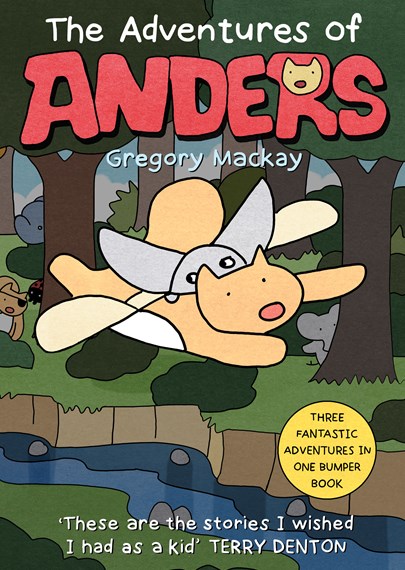
A graphic novel for younger readers, Gregory Mackay’s ongoing adventures of Anders the Squirrel and his friends are quite simply delightful. Lauded by Angouleme Festival, the most prestigious comics awards in Europe, as well as winning a Silver Ledger Award locally, I’m cheating slightly by including The Adventures of Anders (Allen & Unwin) on this list, as it’s really a collection of three short stories rather than a sustained narrative, but it’s just so good!
Praised by the Children’s Book Council of Australia as ‘a celebration of childish imagination’, these stories feature a charming mix of social lessons, facts and diagrams, and exciting adventures coupled with simple but delightful grey-scale artwork – highly recommended for younger readers and their grown-ups.
Blue by Pat Grant
A story of ‘immigration, the hazards of memory, and the beauty and scariness of big waves,’ Pat Grant’s remarkable Blue (Giramondo/Top Shelf Productions) recalls Rob Reiner’s 1986 film Stand By Me in its evocation of adolescence and coming of age, complete with following a train line to view a dead body – a body which in this instance is not human.
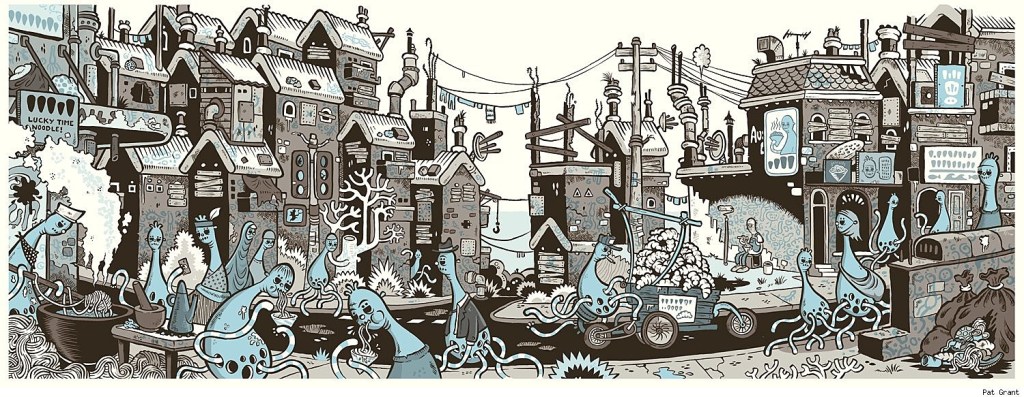
Set in Grant’s fictional seaside town of Bolton, the writer/illustrator uses his fusion of text and image to explore ‘the roots of beachside bigotry and aggressive anti-immigrant localism in Australia’s coastal communities,’ rather than wallow in Stephen King-inspired 1950s nostalgia. A subtle and compelling work, visually grotesque yet triumphant.
Home Time by Campbell Whyte
A group of children stumbling into a parallel world is far from an original trope – think the Narnia stories of C.S Lewis or Neil Gaiman’s Coraline – but this visually lush graphic novel by Campbell Whyte (Top Shelf Comics) breathes fresh life into the genre.
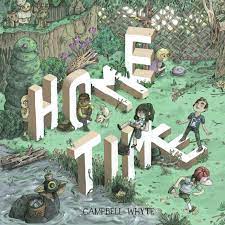
Set in those magical weeks between the end of primary school and the start of secondary school, Home Time sees a group of children – each far more than the usual collection of stereotypes – flung into a fantastic world. Each chapter has a different visual style and aesthetic, matching the perspectives of its protagonists (but also counteracting the risk of visual fatigue in the reader) and the book as a whole is ‘a dense and engrossing read’ from ‘a great imagination at play’.
Rivertime by Trace Balla
Published by Allen and Unwin, this exquisite work for younger readers – a comic book take on the perhaps more familiar picture book – is a gentle celebration of a life spent away from screens and devices – charmingly educational without ever feeling hectoring or didactic.
Beautifully illustrated and richly informed, Balla’s story of young Clancy’s trip up the Glenelg River with his Uncle Egg, a twitcher, touches on environmental issues, Indigenous sovereignty, literacy and so much more. It’s a graphic novel about slowing down, about learning, and Balla’s ‘gentle colours add to the atmosphere and each page is peppered with little bush creatures and their names, ‘the things that the Clancy of the beginning wouldn’t see and couldn’t appreciate, but which the Clancy of the end values’. Highly recommended.
Still Alive: Notes from Australia’s Immigration Detention System by Safdar Ahmed
Awarded the $10,000 Book of the Year award in the 2022 NSW Premier’s Literary Awards, as well as the $20,000 Multicultural NSW Award, Safdar Ahmed’s Still Alive (published by Twelve Panels Press, and an expanded take on his 2015 Walkley Award-winning webcomic Villawood) was praised by the judges as a work of ‘vision, ambition and achievement … an example of brilliant storytelling created with and through community, a labour of generosity, and love. It is an unflinching critique of policy and discourse that demonstrates the power of art.’
Read: Migration stories in graphic books
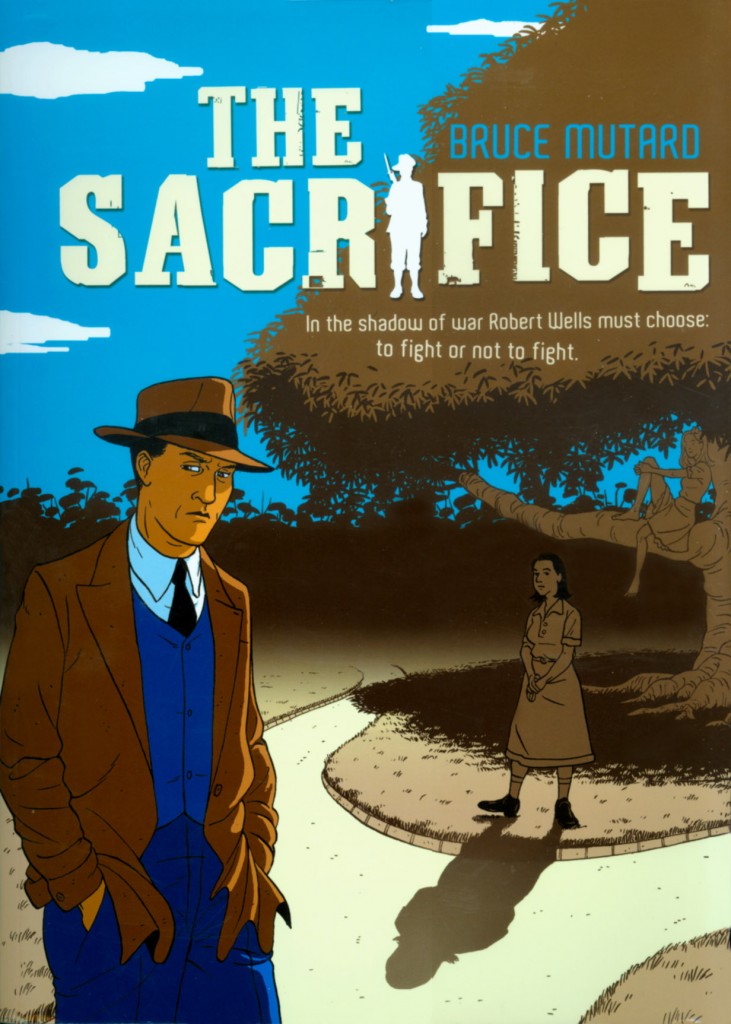
The Sacrifice by Bruce Mutard
An ambitious exploration of the Australian experience in WWII, The Sacrifice (Allen and Unwin) is the first of a trilogy, and ‘so firmly rooted in the reality of World War II Melbourne, that you can almost hear the trams trundle down Collins Street’.
Exploring the ethical dilemma of pacificism at a time when enlisting was seen as service to the nation, Mutard’s almost documentary-like approach to the period (it’s evident that his research was fastidious) is visible on every cleanly drawn and evocative page.
Under-Earth by Chris Gooch
Dystopian fiction with a uniquely Australian slant – and Mad Max is nowhere in sight. Referencing modern Australia’s colonial origins, Chris Gooch’s Under Earth (Penguin) sees prisoners dumped out of sight and out of mind – though in this instance it’s underground, surrounded by the detritus of human culture, rather than an isolated continent on the far side of the world.
As two parallel narratives unfold, Gooch ‘constructs a potent and oppressive environment … [in which] the rewards … come from the [characters’] small human moments while stuck inside their cage’.
Visually, ‘Gooch employs grids and patterns within his panels that almost result in abstraction, which in turn heightens the sense of disorientation that the characters are presumably feeling,’ while throughout, the muted colours ‘fade from top to bottom, which creates a sense of there being some faceless oppressive force bearing down upon everyone’. A grim read, but a rewarding one.
When One Person Dies the Whole World is Over by Mandy Ord
Longlisted for the 2020 Stella Prize, Mandy Ord’s ‘quietly affecting … poignant [and] funny,’ When One Person Dies the Whole World is Over (Brow Books) is ‘an elegantly complex book of illustrated non-fiction in the form of a page-to-a-day diary of one year in the author’s life. In lush black monochrome, Ord takes us through a memoir that incorporates the humdrum of daily life, interactions with partner and pets, and the joy and drudgery of workplaces,’ the Stella judges note.
